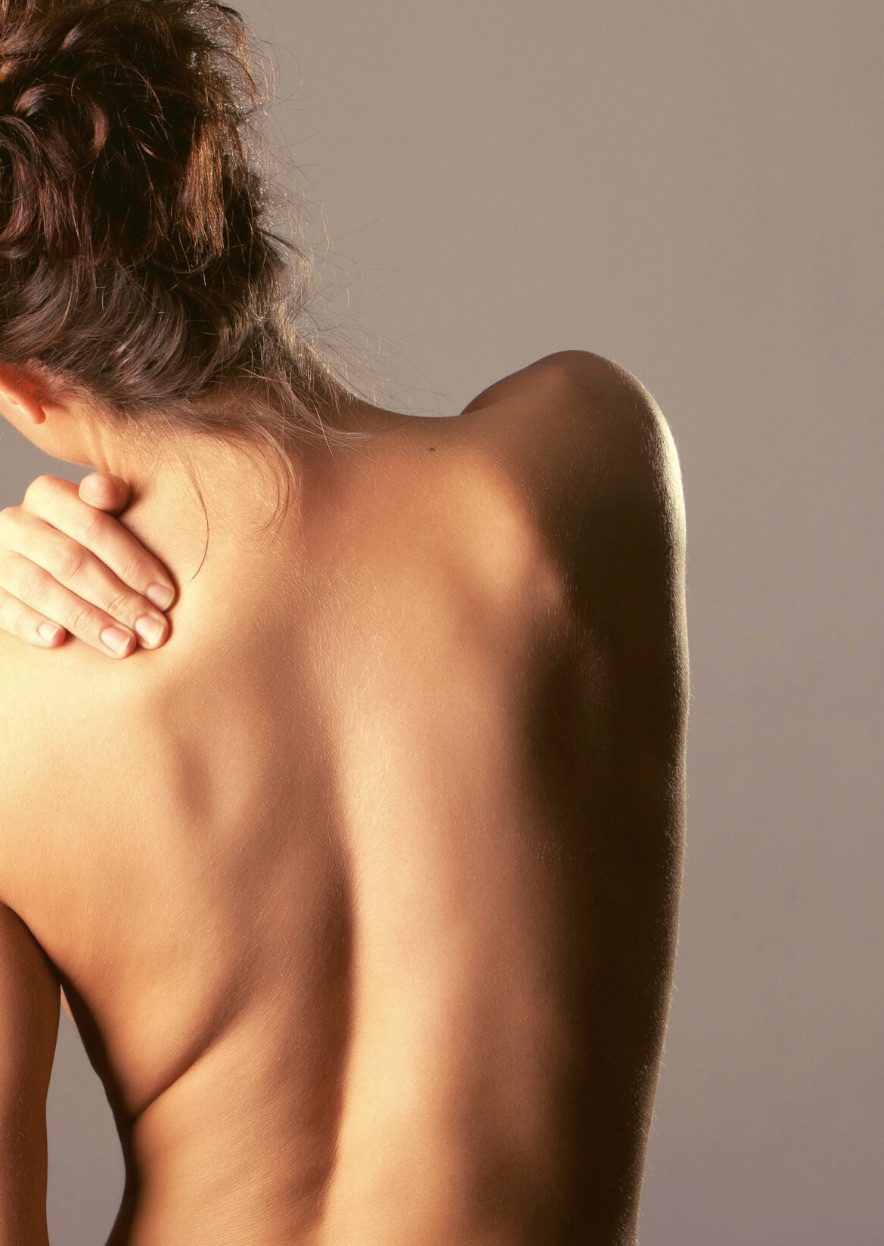In this article, you will learn how the elasticity of your fasciae as a link between your muscles, your tendons, your skin is very directly dependent on your posture, which in turn is strongly linked to your emotions. Negative spirals can develop in this way. But there are ways out.
Emotions and fascia – A body dialogue
How are our emotions related to our posture? How can I help myself if I have a vertebral blockage, how can I deal with pain and do want to tell me something? What is the best way to move myself? And how can I prevent it?
Maybe you know these questions? They have been with me all my life. Because of my own experience with pain: At birth I was born with a very pronounced scoliosis (curvature of the spine), which means that my body has always needed a lot of attention. Very early on, the doctor’s diagnosis was, “She’s going to have a hump when she’s a teenager, and she’ll be walking with a cane by the time she’s 40.” Today I am 48 and have neither. I do, however, know a lot about pain. I have learned to talk to my body, but most of all to listen to it. Where blockages and pain to the point of immobility used to limit my flexibility, today I usually recognize the warning signals ahead of time and can take care of myself and keep healthy with mindfulness, targeted exercises and fascial stretches.
Fasciae are layers of tissue that give our bodies its internal and external shape. They envelop the body as a whole, but they also envelop all of its parts, the muscles, tendons and bones as well as organs, the vessels and nerves, even the brain and spinal cord. They give us support and our shape. They are responsible for metabolism, for the removal of waste products. If they are elastic and watery, without adhesions, we feel good, free, alive and outwardly we radiate.
Without the fascial network we would simply collapse. In addition to movement impulses, they also react to vibrations, to emotions, feelings, sensory impressions and thoughts.
And the fasciae are the outpost of our autonomic nervous system. And because of that, they react to stimuli from inside and outside.
Our emotions manifest themselves in our fasciae. How can we understand this?
The fasciae contain 90% of our nerve cells. The brain reacts to sensory impressions about the body. Certain movements therefore cause certain reactions in the nervous system. This means that a change in the tone of our muscles directly influences the entire body. Now if the same muscle tone is evoked again and again (e.g. by stress, accident etc..), this manifests itself in the brain; the so-called brain maps store it and from here influence movement patterns and body posture.
It is the same with our posture. Every feeling influences the musculature as well as the posture. Anger, for example, shows itself in clenched fists and clenched teeth. Fear in tightened bending and abdominal muscles and held breath. Joy is expressed in light limbs and a creative mind. Thoughts always influence and shape the tissues in the body.
The forming process uses and integrates all our faculties: Imitation, desire, feeling, analytical ability, imagination, remembering and designing. The most important question we can ask ourselves is not WHY, but HOW do I do it?”.
Applied to your life, it means: Accept what happens to you, and decide how you will respond! And then focus on what you want and not on what you don’t want.
Every emotion has a physical and organic assignment if it is not expressed. However, due to different states of mind, everyone reacts differently to suppressed emotions. But the fact is: we MUST express emotions, otherwise we will get sick. If we do not succeed in doing this well, we lack visualization of the emotions, which means that the physical sensation cannot or can hardly be associated with a mental state. However, we can learn to do this and this is where fascia comes into play. We need to learn to sense and feel again.
Our appearance and body shape and alignment tell an emotional story of our attachments and separations, closeness and distance, acceptance and rejection. Our shape reflects the nature of our individual problems and how they affect our organism. The sense of our self is a corollary of cellular metabolism and tissue tone; it is hardwired into the brain as our way of functioning. In this way, the shape of our tissue participates in the determination of our own sensations and feelings. So let us learn to control and express our sensations, because behind every unnatural posture there is a withheld emotion, an unembodied feeling.
An emotion is a physical condition with a programmed muscular pattern of expression. Emotions allow us to move toward the world and back to ourselves.
Fascia is like water and responds to muscle tone and reflexes. When we are frightened, it causes the tissues within us to stiffen and harden. Love and tears make soft and fluid. When emotions rise, we figuratively behave like the tide or an icy stream. Our body with its individual anatomy goes through dynamic, moving and emotional processes and stores them.
Through suppressed emotions we distort our tissues and if this state lasts too long and our tissues are irritated by it, they get problems and can go through changes, which we then call “disease”.
What can I do if I always feel so stressed?
Stress is first of all only a form of arousal. We need this arousal to become active, that is, to stimulate us to act. However, if there is no relaxation because we cannot find a way to express ourselves, we suffer. Learn to pay attention to yourself and HOW you connect with what stresses you, HOW you relate to others, HOW you use that drive, HOW you inhibit it.
Nothing in our bodies happens purely by chance. We are not made wrong. It’s just about participating in the dialogue with the body over and over again. It’s about listening. Our body shows us the way to the hidden emotions.
Move the way the body intended for you to move.
Use your joints: move in a varied way!
Use your legs to carry you: run!
Use your arms to embrace and reach: open them and stretch them to the sky! Use your eyes to look far: Change your perspective!
Use your back to straighten up – Show yourself in your greatness – and lean: Surrender!
And use your emotions: feel!
The path into dialogue with the body is a path based on high mindfulness, which includes feeling as well as imagination and visualization with much gentleness, with self-love and with devotion for oneself.



